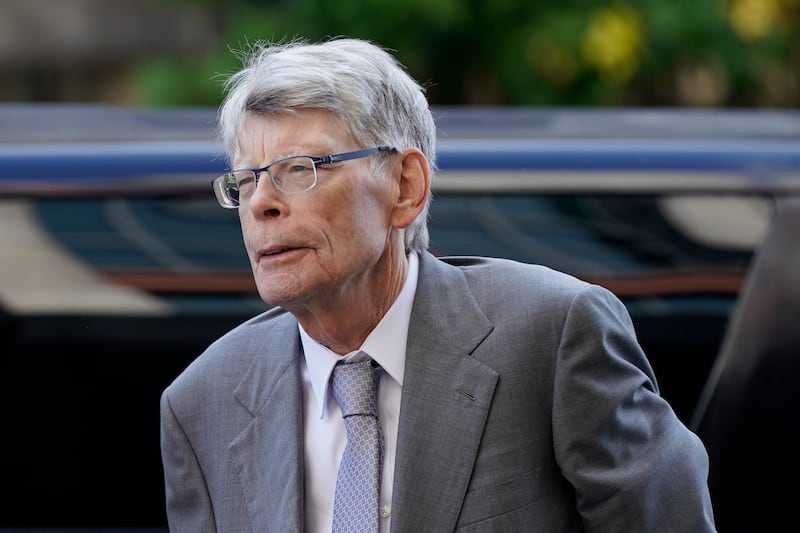The Dead City is the ninth in your successful Stefan Gillespie series. Tell us about it and him
1944. The beginning of the end for Nazi Germany. Garda detective Stefan Gillespie travels to Berlin with instructions for the Irish ambassador, clinging on in the chaos. Stefan thinks of himself as decent, but searching for an Irish man trapped in Germany, he has to ask if saving one life matters in the devastation.
Your book returns to Berlin in 1944, four years later than The City of Lies (2017). Tell us about your experiences of the city
I knew the city in the 1980s. The Cold War was hot. Soviet soldiers drove round West Berlin, British and American MPs round the East. Western U-Bahn trains passed under the East through ghost stations unused since the 1950s. The wall was around every corner. Visiting Berlin recently with my children, it was impossible to describe the unique intensity of that city of two halves. I was there when the wall came down in 1989. It felt like the last act of the second World War.
The series has also featured Danzig, New York, Lisbon, London, Rome and Dublin. Which was your favourite to describe?
New York in the 1930s – unlike any city on Earth.
You grew up in England with Irish family. Did their tales of Irish history inspire your love of the subject?
Only after finishing The City of Strangers did I realise how much of my grandmother was in it. Born in Inishowen in 1898, she told stories of IRA gunmen and London’s Blitz. Not all true. There was a priest who carried the Host to a dying man, unscathed through machine-gun fire. At five I had my doubts. But her words colour what I write. They may be why I write it.
Sally Rooney: ‘I enjoy writing about men ... the dangerous charisma of the oppressor class’
Alzheimer’s: ‘I’ve lost my friend and my companion,’ says Úna Crawford O’Brien of fellow Fair City actor Bryan Murray
Ryan Adams at Vicar Street: A gig that nobody will forget anytime soon, but perhaps not for all the right reasons
You live in a former farmhouse on the edge of the Wicklow Mountains. It features in all your novels as Stefan’s family home. Describe it and its importance
The house is unlike the farm of 25 years ago, but the same stone clads it. From above, the footprint mirrors the 1840s Ordnance Survey map. It keeps its place in its landscape. It looks at Kilranelagh and Baltinglass’s other hillfort-topped hills. Nearby is the wild silence of Kilranelagh Graveyard, maybe the oldest still-used burial site in Ireland. The area has a quiet, unassuming beauty. The past rises up from the ground. But we embrace the present too, with a cold eye that stops us losing the run of ourselves. I hope a little of that is in my stories.
The Yorkshire Ripper murders made me uneasy with TV violence, especially towards women
Your TV credits include Emmerdale, Eastenders, All Creatures Great and Small, The Bill, Heartbeat, Between the Lines, Midsomer Murders and A Touch of Frost. What are you proudest of and has it helped your novel writing?
A Touch of Frost episode about a teenage boy and girl with Down syndrome still matters. I fought to have a young man with Down’s, Timmy Lang, cast when ITV wanted someone to “act” Down syndrome. The demanding part was played triumphantly by Timmy. I think crime TV adds little to my novels but All Creatures Great and Small taught me the smallest things can make a story.
You lived in Leeds while the Yorkshire Ripper was on his murdering spree. Did this turn your thoughts to crime writing?
It made me uneasy with TV violence, especially towards women. I abandoned a Ripper murders commission because I wanted to see it all through the disastrous police investigation and the producer wanted to keep seeing “that hammer fall”.
You contracted polio as a seven-year-old. Did this help make you a reader, and a writer?
I spent months alone in an isolation hospital, with nothing to do but read. I don’t recall what (except the Dandy and Beano). I think it’s what made me write.
The head of BBC Script Unit described your radio play about a theologian linked to the Nazis as the most offensive he had ever read. Why?
It was about a Nazi euthanasia programme for the handicapped. It contrasted nuns trying to save children with a theological debate about whether the church should interfere. The facts were well-documented, the play well-researched. It was sent, oddly, to the Catholic Information Office. They said it was a lie. And so I needed berating! No one noticed a story of self-sacrifice by Catholic nuns.
You moved to Ireland when your first wife, Joy, was working as the producer of Ballykissangel. What made you stay, despite her death?
I had no reason to stay. I assumed I’d return to England. But Wicklow became home. I don’t believe in fate, but there is serendipity in our choices. Studying Old Irish at Oxford, I read Fingál Rónáin. Idris Foster, my tutor, knew the hills where the tale was set and the “white stones” the poet compares to cattle. For 40 years I forgot that conversation, till I stumbled on those stones, forgotten too (but now a national monument). If I don’t know why I stayed, perhaps I had to.
What projects are you working on?
The next Stefan Gillespie.
Have you ever made a literary pilgrimage?
Childhood drives in Dorset with my grandfather revolved round Hardy’s Wessex. But later I visited Boscastle, where he met his first wife and, after her death, found inspiration for his great elegy to lost love, Poems of 1912-13.

What is the best writing advice you have heard?
Stephen King: If you don’t have time to read, you don’t have time (or the tools) to write.
Who do you admire the most?
Socrates.
The most remarkable place you have visited?
The Kalahari’s Tsodilo Hills rock paintings. At night, by a fire, I watched a San storyteller enthral his audience. We drank beer and talked about storytelling. When I left, he gave me his hunting bow. He said it would help me hunt stories.
Your most treasured possession?
A very battered William Tyndale Newe Testament of 1538, the first English translation from Greek. Tyndale almost singled-handedly created English prose. Eighty per cent of the King James Bible is his. He was garrotted and burnt at the stake as a heretic. It is also my most beautiful book, just for its words.
Which writers, living or dead, would you invite to your dream dinner party?
Catullus, Chaucer, John Donne, Ezra Pound, Samuel Beckett.
The best and worst things about where you live?
Best, view. Worst, weather.
What is your favourite quotation?
Cicero: If you have a garden and books, you have everything you need.
Who is your favourite fictional character?
Huckleberry Finn.
A book to make me laugh?
Richmal Crompton’s William stories. I laughed as a child and again when my own children discovered them.
A book that might move me to tears?
Josef Bór’s Terezin Requiem recounts a performance of Verdi’s Requiem in Prague’s Theresienstadt/Terezin concentration camp – 33,000 people died there; 88,000 went to death camps. But conditions were “better” than elsewhere. The Nazis even dressed the camp up to persuade the Red Cross it was a “town” Hitler had “given” the Jews. Much music was produced in Terezin, which held musicians of extraordinary calibre. The Requiem was performed for the Red Cross. The SS applauded conductor Raphael Schächter. He asked to keep his choir together. Days later they entered an Auschwitz gas chamber. Together.
The Dead City by Michael Russell is published by Constable



















